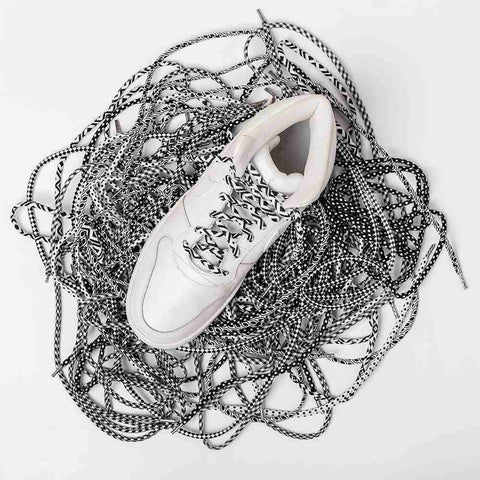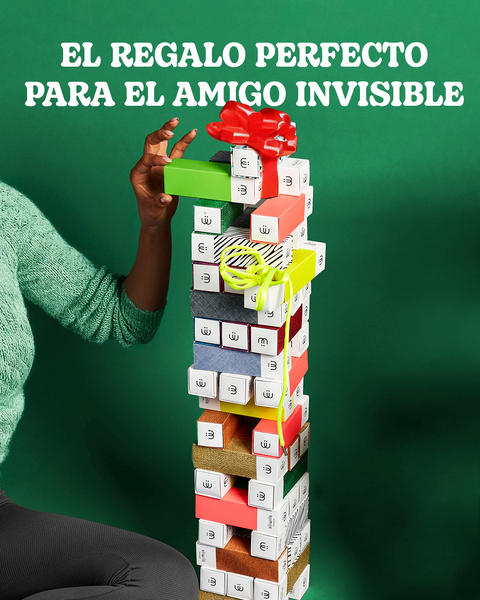
Slow fashion, the fashion the planet needs
Have you ever heard the term "slow fashion"? Behind it hides a different way of understanding the textile sector, which breaks with the conception imposed by big brands that we all know.
The seed of "slow fashion
A few decades ago, the most famous brands in the textile sector began to implement the "fast fashion" model, i.e. mass-producing huge quantities of low-quality garments that would end up in the trash after a few uses.
But it was not only the questionable quality of the garments, but also the great social and ecological impact of their manufacture, as we will see below.
Unfortunately, "fast fashion" continues to be the predominant vision to this day, days in which we are already feeling the consequences of this unethical way of understanding the sector.
In fact, the textile industry is one of the most polluting industries in the world, alone responsible for 10% of greenhouse gas emissions.
Definition of "slow fashion
Faced with this situation, Kate Fletcher Professor of Sustainability, Design and Fashion at the Centre for Sustainable Fashion in London, coined the term "slow fashion" in 2007 as a reaction to the "fast fashion" of these brands.
With it, Fletcher warned of the need to change the model of production and consumption of textile products, advocating a more sustainable, conscious and responsible way.
That is, the manufacture of quality and durable textile products, created with the lowest possible environmental impact and respecting the fundamental rights of workers.
The tragedy that catapulted "slow fashion".
Although the term "slow fashion", ethical fashion or slow fashion emerged in 2007, it did not take center stage until the tragedy that took place in a textile factory in Bangladesh in 2013.
The facilities did not comply with the minimum safety conditions, collapsed and collapsed, causing the death of more than a thousand workers, more than half of them women.
The tragedy, which was broadcast by several global television networks, began to raise awareness of the working conditions in these countries, where people are exposed to enormous risk to manufacture cheap garments destined for a Western landfill....
Basis of "slow fashion
Any brand or designer who wants to switch to "slow fashion" must follow its vade mecum, which is described below.
The origin of materials in "slow fashion".
The "fast fashion" takes materials from wherever it is cheapest (mainly Asia)...
On the other hand, "slow fashion" opts for zero kilometer materials, with the consequent saving of pollutant emissions derived from their transportation to the place of manufacture.
Zero kilometer production
Slow fashion is also committed to the local production of products, which creates jobs in the place of origin of the materials.
The quality of materials in "slow fashion".
In contrast to the low-quality materials used in fast fashion, the quality of materials is fundamental to slow fashion. This increases the useful life of the products, which will not end up in the trash after two days.
One of the most used materials in "slow fashion" is organic cotton. The white gold of the textile sector, whose advantages over traditional cotton are numerous.
Local, ethical and quality work thanks to "slow fashion".
As mentioned above, "slow fashion" defends not only local production, but also ethical and fair working conditions: living wages, vacations, sick leave....
This point may seem obvious, but let us remember that "fast fashion" locates production in developing countries where working conditions are not exactly the best (in many cases, even child exploitation occurs).
Zero waste production
Fast fashion does not choose to produce in developing countries only because of abusive labor conditions. It also does so because, in those countries, environmental laws are laxer or non-existent.
That said, it must also be taken into account that textile production requires enormous quantities of water (it is estimated that about 3,000 liters of the precious liquid are used to make a single pair of jeans).
In "fast fashion" countries, where not everyone has access to drinking water, much of it is used for textile production and not for human consumption, so the environmental and social impact is unquestionable.
Slow fashion, on the other hand, innovates and focuses on production models that are increasingly respectful of the environment, with the goal of achieving zero waste.
Slow fashion" production, limited and timeless
In the face of mass production based on temporality, "slow fashion" prefers limited and reduced production, which prioritizes quality over quantity.
Product traceability
The traceability of products practiced by "slow fashion" refers to the information that the user receives about the origin of the garment and the conditions under which it was produced.
In "fast fashion", labels indicate little more than the now classic "Made in China"...
Sliwils bets on "slow fashion".
At Sliwils, creators of fun and original shoelaces for sneakers, we are committed to "slow fashion" as a production model, manufacturing quality laces locally (Manresa) with zero kilometer materials.
Will you join us in the change of fashion?



Comments (0)
There are no comments for this article. Be the first one to leave a message!